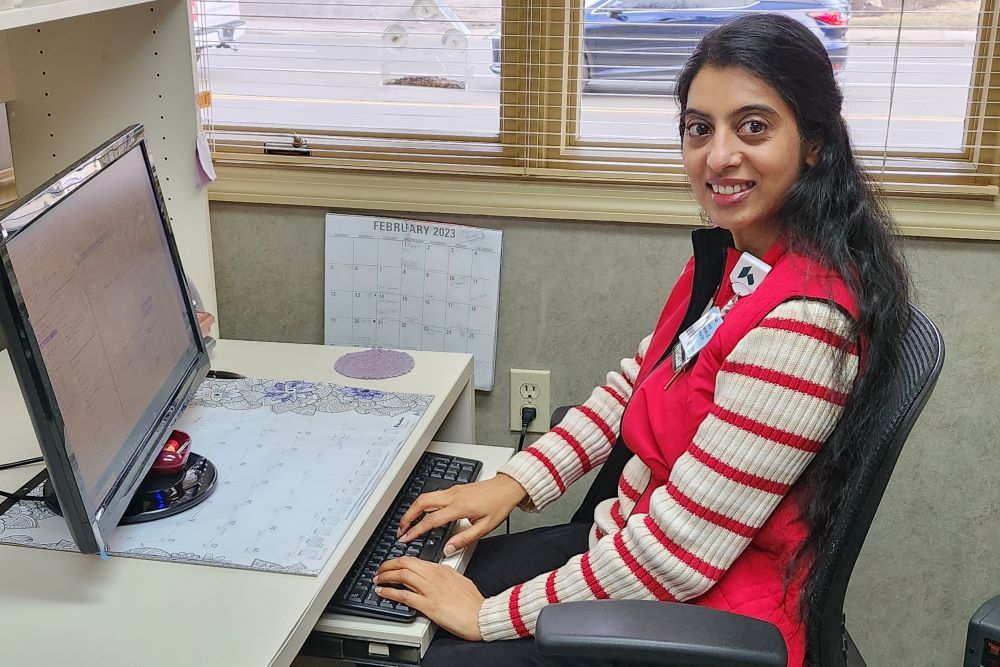Podiatry Care
Want to learn more about this at Kettering Health?
Heart disease is the number one cause of death in the U.S.
But few people understand why—or how to avoid becoming part of the statistic.
Dr. Soumya Neravetla, cardiothoracic surgeon at Kettering Health, sees patients wrestling to understand this every day, and she wants to help educate people to improve their heart health.
Why is high blood pressure so common?
Nearly half of adults in the U.S. live with hypertension, or high blood pressure. The leading cause? Salt in our diet.
When we consume excess salt (more than 1,500 mg per day, according to the American Heart Association (AHA)), our heart is forced to pump more blood. Over time, salt also narrows the vessels blood flows through. This causes the blood vessels and heart to stiffen. This increases one’s blood pressure.
Patients who consistently have blood pressure readings of 130/80 mm Hg or higher are considered to have hypertension.
But what does a blood pressure reading even mean?
Blood pressure is measured as two numbers: systolic (the top number, when the heart beats) and diastolic (the bottom number, when the heart rests between beats). Together, they represent how much pressure your blood exerts against your artery walls, which is measured in millimeters of mercury, or mm Hg.
The reason experts like Dr. Neravetla see hypertension as problematic is because it leads to conditions like diabetes, heart attack, stroke, heart disease, and heart failure.
“The precursor to almost all of the issues that lead to heart disease is hypertension,” Dr. Neravetla says.
Lifestyle changes and medication can treat hypertension, but limiting your risk is always the best option.
Dr. Neravetla urges everyone to view hypertension as a preventable disease.
How to prevent hypertension
The first step is to know your blood pressure numbers and what they mean. A normal, or healthy, blood pressure level is less than 120/80 mm Hg.
The other blood pressure categories, offered by the AHA, are
- Elevated: 120-129 (systolic) and less than 80 (diastolic)
- Hypertension stage one: 130-139 (systolic) or 80-89 (diastolic)
- Hypertension stage two: 140 or higher (systolic) or 90 or higher (diastolic)
- Hypertensive crisis (consult your doctor immediately): higher than 180 (systolic) and/or higher than 120 (diastolic)
You can measure your blood pressure for free at most drug stores and pharmacies. Or you can purchase a blood pressure cuff to measure your blood pressure at home.
Along with knowing your numbers, Dr. Neravetla stresses what she says most Americans wrestle with: diet.
Shifting our view of diet
“The number one aspect to manage has to be diet. You can’t out exercise your diet choices,” she explains. She offers this example:
Say you eat a slice of cheesecake. You may exercise later and feel you removed its effects from your body. But that’s not the case, she says.
“It is certainly important to exercise for cardiovascular fitness, but we need to realize that there’s no amount of exercise that can overcome poor eating habits.”
Another key component, according to Dr. Neravetla, is a large-scale shift in how we view salt and its effect on heart health in America.
“Building public sentiment of low-sodium awareness can help bring about change on a population level,” she shares. “The more consumers request less-processed, lower sodium options, the more the industry will adapt to that need.”
One of the top tips for a heart healthy diet is to limit (or eliminate) salt. Try replacing salt with natural herbs and spices like garlic, ginger, or cilantro, or juices like lemon and lime. Lookout for popular foods full of salt like breads, tacos, lunchmeat, pizza, and soup.
It’s small changes like these to our diets and habits that can make a big difference for our hearts.










